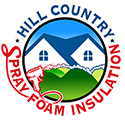When it comes to keeping your home cozy and energy-efficient, understanding R values is crucial. In simple terms, R values measure how effective insulation is at resisting heat flow. The higher the R value, the better the insulation’s thermal performance. Let’s delve into what R values are, why they matter, and explore different types of insulation and their respective R values.
What are R Values?
R values, short for thermal resistance values, quantify how well insulation materials resist heat transfer. They are a standard measurement used in the construction and insulation industry to assess insulation efficiency. Essentially, R values indicate the insulation’s ability to keep heat inside during winter and prevent heat from entering during summer, thus maintaining a comfortable indoor environment.
Why are R Values Important?
- Energy Efficiency: Higher R values mean better insulation, leading to reduced energy consumption for heating and cooling. This translates to lower utility bills and decreased environmental impact.
- Comfort: Properly insulated homes maintain consistent indoor temperatures, ensuring comfort year-round by minimizing drafts and temperature fluctuations.
- Durability: Insulation with adequate R values contributes to the longevity of your home’s structure by preventing moisture build-up and reducing the strain on HVAC systems.
- Soundproofing: Insulation with higher R values can also provide better soundproofing, reducing noise transfer between rooms and from the outside environment.
Types of Insulation and Their R Values
- Fiberglass Insulation (R-Values: 2.2 – 4.0 per inch): One of the most common types, fiberglass insulation consists of fine glass fibers. It comes in batts, rolls, or loose-fill forms and offers good thermal performance at a relatively affordable cost.
- Cellulose Insulation (R-Values: 3.1 – 3.8 per inch): Made from recycled paper or plant fibers treated with fire-retardant chemicals, cellulose insulation provides effective thermal resistance and is eco-friendly.
- Spray Foam Insulation (R-Values: 3.5 – 6.5 per inch): This expanding foam insulation creates an air-tight seal, offering superior R values and excellent moisture resistance. It’s ideal for sealing gaps and hard-to-reach areas.
- Polyurethane Foam Insulation (R-Values: 5.6 – 6.3 per inch): Known for its high R values, polyurethane foam insulation provides exceptional thermal resistance and can be sprayed or applied as rigid boards.
- Mineral Wool Insulation (R-Values: 3.0 – 3.3 per inch): Made from natural or recycled materials like volcanic rock or slag, mineral wool insulation offers good fire resistance and soundproofing properties along with moderate R values.
- Reflective or Radiant Barrier Insulation (R-Values: Varies): Reflective insulation reflects heat away rather than absorbing it, making it suitable for attics and roofs to reduce radiant heat transfer.
Choosing the Right Insulation for Your Home
Consider factors like climate, budget, installation area, and desired R values when selecting insulation. Consulting with insulation professionals can help determine the most suitable type and thickness for optimal energy efficiency and comfort in your home.
In conclusion, R values play a pivotal role in evaluating insulation effectiveness, impacting energy efficiency, comfort, and overall home performance. Understanding these values empowers homeowners to make informed decisions regarding insulation choices, ultimately leading to a more comfortable and sustainable living environment. Contact us to discuss the best insulation for your home.
Get Started
Need A Free Estimate?
Don’t hesitate—take the first step towards a more comfortable and energy-efficient space by reaching out to Hill Country Spray Foam Insulation today for your free, no-obligation estimate.
